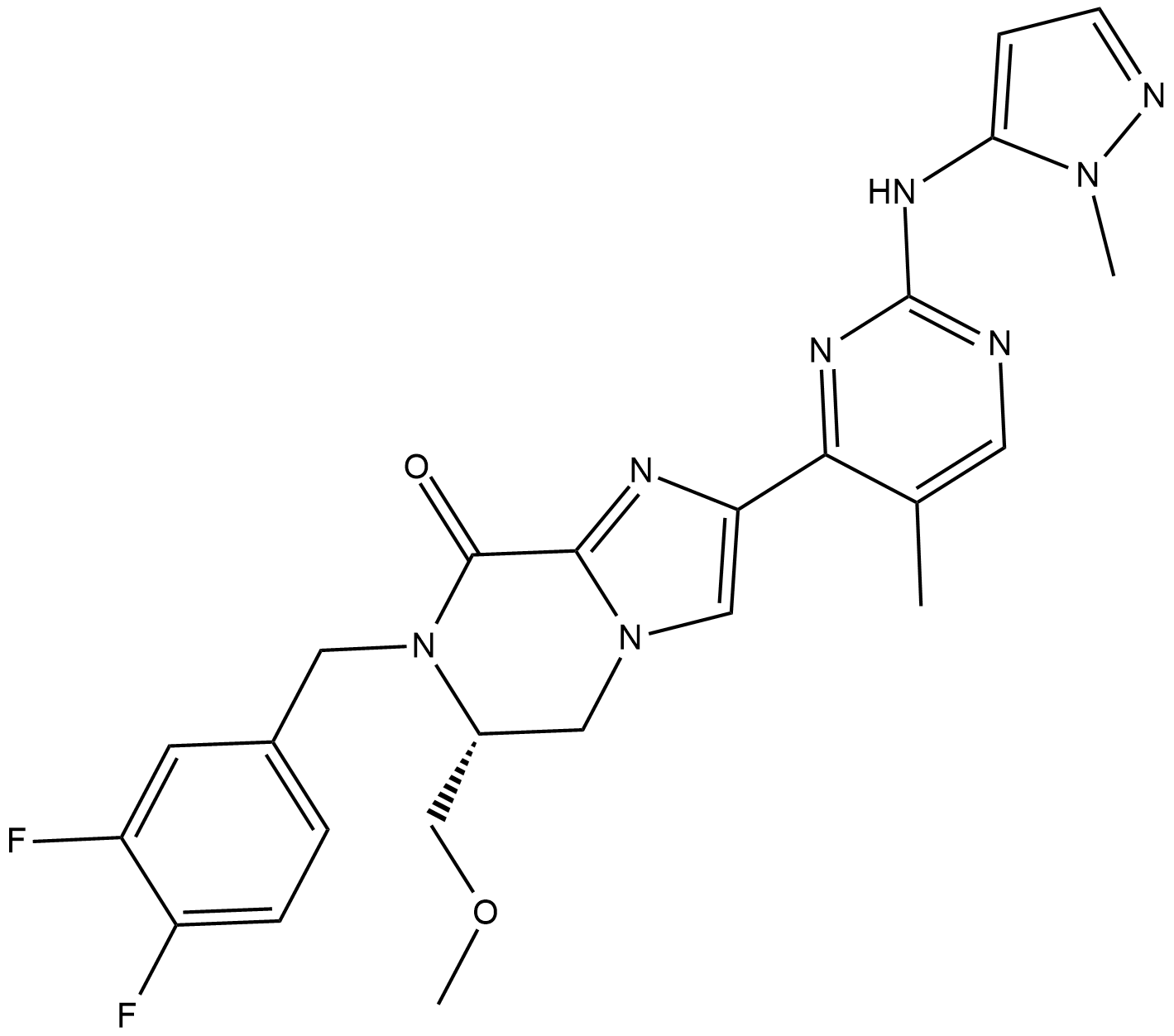AZD-0364 (Synonyms: AZD0364) |
| Catalog No.GC19048 |
AZD-0364 (AZD0364) est un inhibiteur puissant et sélectif de ERK2 extrait du brevet WO2017080979A1, exemple composé 18, a une IC50 de 0,6 nM.
Products are for research use only. Not for human use. We do not sell to patients.

Cas No.: 2097416-76-5
Sample solution is provided at 25 µL, 10mM.
AZD-0364 is a potent and selective ERK2 inhibitor extracted from patent WO2017080979A1, compound example 18, has an IC50 of 0.6 nM.
AZD-0364 is measured in the ERK2 mass spectrometry and A375 phospho-p90RSK assays with IC50s of 0.6 nM and 5.7 nM, respectively. AZD-0364 can inhibit the growth of a panel of cancer cell lines (A549, H2122, H2009, and Calu6 cell lines) with KRAS mutations as a monotherapy and this effect is synergistically enhanced by treatment with Selumetinib[1].
Tumor growth inhibition by AZD-0364 ethanesulfonic acid (Example 18a) in combination with MEK inhibitor Selumetinib is measured. Studies are performed in the A549 xenograft model. Selumetinib is dosed twice daily (BiD) 8 hours apart and AZD-0364 ethanesulfonic acid is dosed once daily (QD) 4 hours after the first Selumetinib dose. Both compounds are dosed continuously for 3 weeks. Both vehicles are dosed in the vehicle group. Both Selumetinib and AZD-0364 ethanesulfonic acid reduce tumor growth relative to vehicle only control. The combination of Selumetinib and AZD-0364 ethanesulfonic acid results in a reduction in tumor growth[1].
References:
[1]. WARD, Richard, Andrew, et al. DIHYDROIMIDAZOPYRAZINONE DERIVATIVES USEFUL IN THE TREATMENT OF CANCER. WO2017080979A1.
Average Rating: 5 (Based on Reviews and 27 reference(s) in Google Scholar.)
GLPBIO products are for RESEARCH USE ONLY. Please make sure your review or question is research based.
Required fields are marked with *




















